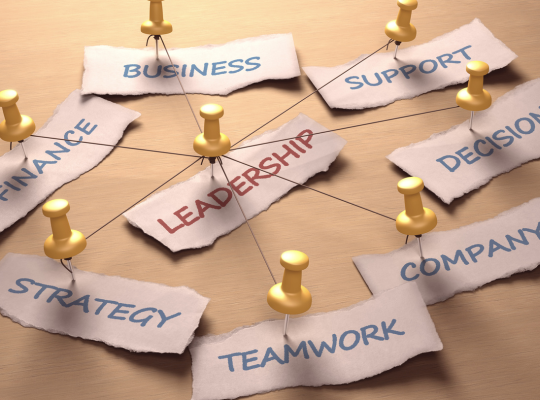High-performing teams work wonders in driving productivity, innovation, and exceptional results. But what exactly is high performance or high performance team model, and how should organizations form such teams? Let’s identify the core principles of building high performing teams using simple examples.
What exactly are High Performing Teams?
High performing teams organize themselves. It consists of go-getters who take the lead and have skills that work well together. These team members share a dedication to reaching common objectives, which they accomplish by producing excellent outcomes. These teams exhibit high levels of trust and collaboration and have collective solid goals. As earlier mentioned, they almost always achieve their set goals and frequently surpass them.
Characteristics
- Clear Goals and Roles: Every member knows exactly what he is required to do and what his role in the team is. The objectives are clear, and with such clarity, everyone puts in their efforts to achieve the desired results.
- Open Communication: Effective communication is the backbone of any high-performing team. Team members have the freedom to share thoughts, give and receive feedback, and discuss issues.
- Trust and Respect: Trust is the basis. Team members trust one another and respect the skills and contributions of other team members.
- Diverse Skills: Different skill sets and minds come up with creative ideas and problem-solving capabilities.
- Effective Leadership: Good leaders are a source of motivation, guidance, and support in terms of personal development, which culminates in a conducive environment for realizing their potential.
- Flexibility: High-performing teams are flexible. They quickly adjust to a situation and its changes or new challenges.
- Continuous Improvement: These teams uphold the tenet that processes and outcomes can be improved. They can always get better and learn from successes and failures.
Building High Performing teams
Creating excellent, high performing teams takes time. It requires strategic and deliberate planning. Some steps toward developing such teams in the business world include:
Clear objectives and roles.
- Start with clear and achievable goals. Ensure that every member is informed about the goals and what each one of them does.
- Adopt the SMART criteria: Specific, Measurable, Achievable, Relevant, and Time-bound in setting objectives.
Open Communication
- Hold regular team meetings so that each member can express their opinion.
- Use collaborative tools and platforms to enable free-flowing communication between the various teams working from remote locations or in hybrid setups.
- Be a good listener. Ensure that feedback is constructive and action-oriented, in one’s improvisation.
Develop Trust and Respect
- Provide team bonding opportunities through team-building activities and social events.
- Lead by example. If you respect and trust everyone within your team, they’re likely to respect and trust you in return.
- Deal with conflicts quickly and fairly to ensure a harmonious working environment.
Tap Diverse Skill Sets
- Identify and utilize the varied skills and perspectives of the different members.
- Cross-train and share knowledge to expand what the team is capable of.
- Strong Leadership
Leaders are approachable, supportive, and decisive.
- Empower team
- Provide your members with autonomy in making decisions regarding their work.
- Inspire change with vision and set an example by showing integrity.
Promote Adaptability
- Take adaptability to the culture of change in your stride with a positive attitude and keep innovating the same.
- Train and provide the team with the resources to accept new technologies and methods of working. Celebrate successes and learn from failures: Both are responsible for building resilience.
Commit to Continuous Improvement
- It is the mandate to roll out the regular performance review and feedback sessions.
- Put in place a monitoring system and review strategies and make changes in between as needed.
- Conduct workshops and short courses and provide opportunities for further study to develop learning among the team and its members.
Characteristics of High-Performing Teams
Developing high performing teams also means creating some characteristics and some qualities to be imparted to the team members. They are :
- Personal Accountability: Every Member is accountable for their performance and overall achievement. This means they are responsible for their conduct and ensure that the promises are kept. Team members can collaborate fully, drawing on each other’s strengths and compensating for weaknesses. They put the team’s goals before personal agendas. A positive attitude facilitates overcoming any problems standing in the way of tasks and staying motivated. High performance team model should be able to maintain a can-do attitude in even the most strenuous situations. Rather than waiting to see what problems will develop, team members proactively anticipate and address issues. Looking forward, they constantly scan opportunities to improve.
- Conflict Resolution Skills: High-performing teams handle conflict productively. They view conflict as a source of understanding alternative perspectives that may result in superior solutions.
- Commitment to the Mission: Team members are highly committed to the mission and goals of the team. Their shared commitment inspires them to work hard enough to achieve success as a group.
How to Apply the High Performance Team Model
Adoption of high performing teams model involves several strategic steps that are as follows:
- Analyze Current Team Dynamics
- A thorough evaluation of the current team structure, dynamics, and performance must be done.
- Strengths and weaknesses must be determined.
- Come Up with a Team Charter
- Prepare team for missions
- Prepare a team charter identifying the mission, values, objectives, roles, and responsibilities.
- Engage all team members in preparing a team charter and ensure they are committed to it.
- Develop the Team
- Maintain the relevance of training and development of the team.
- Conduct workshops that will result in improving competencies or unity by means of mentoring and team-building events.
- Monitor the Team
- Regular checks that the team is operating within the set goals and targets will maintain this status.
- Offers to change the strategy, processes, or roles with immediate effects whenever need be.
- Celebrate Success
- Reward and celebrate both small and significant successes that contribute to keeping the team motivated and committed to work.
- Utilize success to trigger learning by reinforcing what went well.
- Invite Feedback
- Creates a way in which feedback can be issued and received.
- Use feedback for continuous improvement and take prompt measures over any shortfalls.
Conclusion
High Performing teams are what make businesses a definite success. More than that, understanding what goes into a high-performing team, as well as how to build and develop one, will give enterprises outstanding results. These include clarity of goals, open communication, trust, diversity in skills, strong leadership, adaptability, and continuous improvement. Cultivating the said traits within the personalities of its members further enhances the performance of the team.
High-performing teams not only accomplish more but are also more creative and resilient. They can better overcome obstacles and deliver extraordinary results. The building of high-performance teams enables organizations to foster this vibrant, energetic work environment that allows sustaining themselves in the long run.







